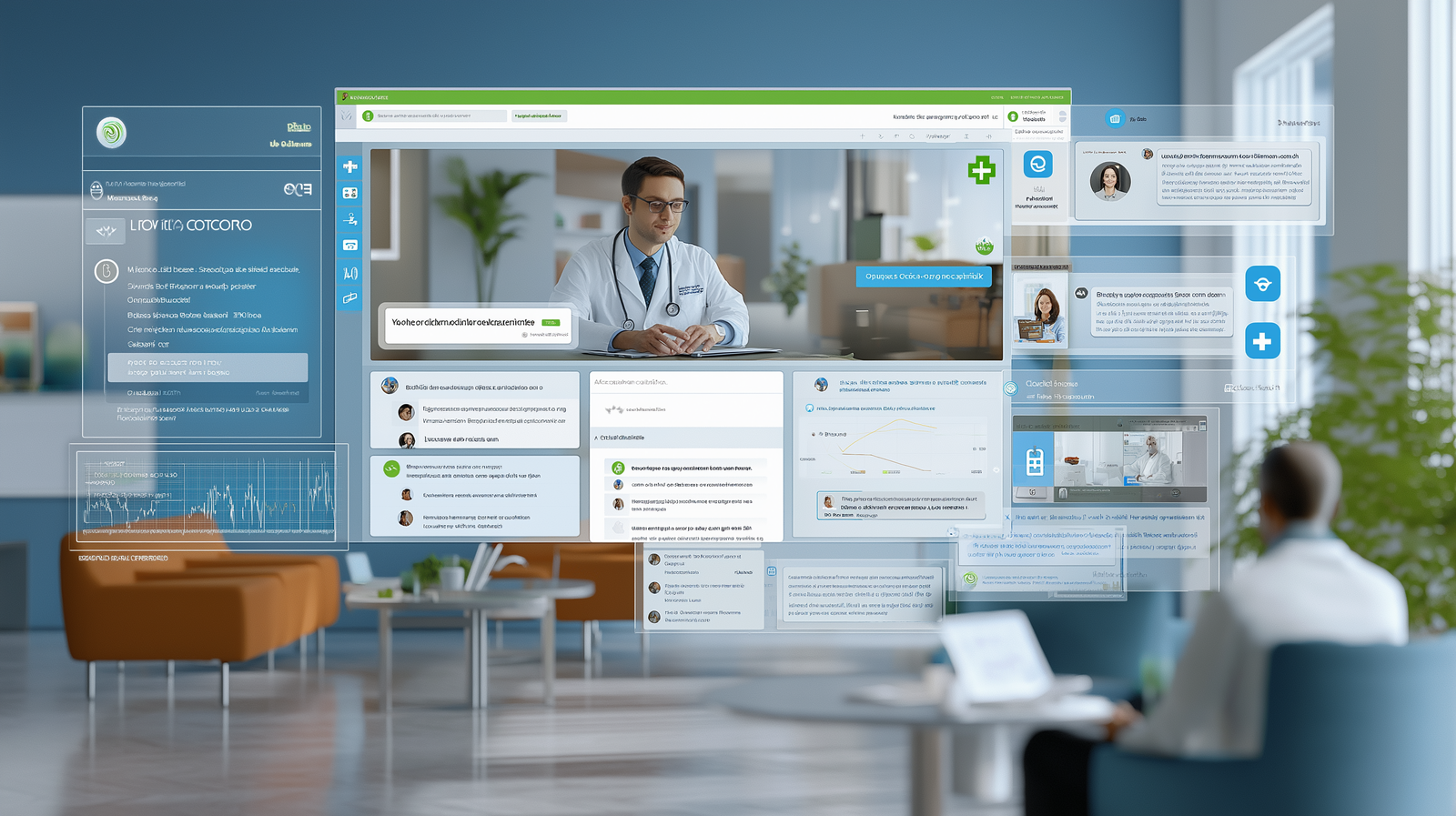Navigating the healthcare system is complex, both for those providing healthcare services and for those receiving it. For example, a patient may see their primary care physician, their pharmacist, and their cardiologist all in the span of a week. Their health insurance company keeps track of these visits and the type of care they’re receiving. On top of that, the patient is increasingly empowered, expecting targeted, personalized and seamless experiences across the continuum of care. So, if you are a healthcare service provider, how do you meet the needs of the modern patient by making sure the patient is receiving the right, personalized notifications about their care, at the right time, in the right channel? We’ll tell you.
Today, a critical success factor for healthcare organizations across the continuum of care is building the capabilities required to meet or exceed the needs of the modern healthcare consumer - a key component is seamless and proactive engagement.
In this blog post, we will discuss in four key steps how digital marketers, whether a healthcare provider, a health insurer, pharmacy benefit manager, or medical device company, can drive engagement through hyper-personalization of content and outbound communications seamlessly across digital channels. This will lead to improved health outcomes, an enhanced experience, and reduced overall cost of care.
Always-on Personalization
As mentioned, superior, seamless engagement is a critical component of appealing to the modern healthcare consumer, thereby improving health outcomes and reducing overall healthcare costs. It’s proven that patients who are informed about their condition and involved in their treatment decisions tend to have better health results, therefore incurring lower costs - a win-win across the continuum of care.
As healthcare organizations modernize their data strategies and gather increasingly more consumer data, such as behavior, core transactions, and zero party environmental and preferences data, it is crucial to turn that data into actionable insights. Those insights can then be leveraged to deliver personalized, targeted content and communications to consumers. The following is our 4 Step approach to achieving hyper-personalization.
Step 1: Start with a Data and Analytics Foundation with Customer 360
There are three parts to Step 1, the first being to build a Customer 360 view. Consumers provide numerous daily clues to their needs and wants, engagement preferences, and social and environmental behavior. Bringing together all this trusted data about your consumer in a Customer 360 data lake is a foundational capability to delivering personalized and targeted care, messaging, and experiences.
As a digital marketer, we recommend that your focus be on sponsoring and championing Customer 360 initiatives with your organization’s data and analytics teams and providing specific business use cases to bolster the cause. An example of this would be gathering data that tells you when a specific subset of consumers is turning 65 so you can remind those consumers to sign up for Medicare.
Building a Customer 360 data lake is much more manageable when you build upon it in an agile or iterative fashion. We’ll be talking more about this in a later blog post, but one way to build incrementally is to start with a segment of consumers based on specific factors; part 2 of Step 1. For example, Productive Edge conducted a member segmentation exercise for one of our health payor clients by plotting anticipated engagement traffic against that segment’s business value importance. In this way, we prioritized four key short term member segment, then assigned specific digital goals (or next best actions, which we will talk more about in Step 4) to each segment. This included a prompt for enrolling in Medicare online, utilization of a specific fee or savings calculator, or downloading the mobile app, all contextualized notifications for that consumer at that moment, based on their individual health journey.
The third and final part of Step 1 is to couple Customer 360 with Machine Learning (ML) and Artificial Intelligence (AI) technologies, enabling your organization to surface even deeper, proactive insights about your consumers that can be used to deliver personalized, seamless, and holistic digital experiences at the right time through the right channel. With Customer 360 + ML/AI technology, you are not only predicting what your consumer wants right now, but also continually learning about where they might be in the future and what they will need at that point in time.
Step 2: Ensure a Consistent and Scalable Intelligent Content Management and Content Governance Strategy
To ensure that you’re realizing the full potential of personalization, it is critical to have a plan to implement appropriate content management and content governance capabilities. A Content Management System (CMS), a Digital Asset Management (DAM) platform, and a content marketing solution are some of the key tools in your digital marketer toolbelt. These solutions all enable the digital marketing team to work more effectively and intelligently for their consumers; the process of content creation, use and monitoring is seamless and consistent. The goal is to create small pieces of content that can be rapidly and intelligently assembled in real-time, to then be used and reused across multiple channels in ways that meet the customer where they are.
Let’s quickly loop back to the concept of Customer 360 + ML/AI. When these tools are used in combination with content, you are able to intelligently assemble marketing and communications content based on real-time insights as the content is consumed (i.e., the tools are continuously learning and adapting to what content resonated with which consumers), allowing your digital marketing team to truly deliver the right content to the right person at the right time through the right channel, achieving Intelligent Content Management.
Step 3: Operationalize Through a Service Design Blueprint
You’re almost there. The next step is to operationalize the process of intelligent content creation within your organization to allow your team to ultimately implement next best actions, which we will discuss further in Step 4. One tool the PE Customer Experience team finds extremely effective with our clients is a service design blueprint for both current and future state. A service design blueprint is an operational diagram that can be used to depict the end-to-end business process and experience for content management, outbound communications, and prioritizing next best actions, including all digital touchpoints such as people, technology, and artifacts involved in each step. The current state blueprint is the springboard to your future state, helping you to identify gaps, optimization areas, and technology opportunities within the process or experience to implement in the future state. The future state blueprint is the ideal state of how this experience or process will operate by visualizing the delivery of the future experience, aligning the teams on future interactions, and prototyping operations and process.
Step 4: Implement Next Best Actions
At this point, you have all the building blocks in place to achieve the peak in your hyper-personalization journey—implementing next best actions for the defined customer segments you identified in Step 1. A primary challenge within the health system today is encouraging consumer behavior modifications, or a proactive nudge such as healthy actions or reminding consumers at a milestone event of a particular action to take, all leading to an enhanced experience and reduced overall cost of care.
Through a combination of Customer 360 Intelligence and Intelligent Content Management, you are able to implement next best actions across your Digital Experience platform. Next best actions encourage consumer behavior modifications or actions as you are providing a prompting course of action through targeted, relevant content based on the known consumer characteristics and behavior. By providing this proactive nudge or reminder, you are staying one step ahead of your customers and are improving their experience and health outcomes.
Today’s healthcare customers are more empowered than ever. Productive Edge works with you to define and accelerate your digital initiatives, enabling you to harness the power of Customer 360 data, leverage analytics and insights, and hyper-personalize content delivery in order to improve health outcomes, enhance the consumer experience, and reduce the overall cost of care.
For digital marketers from national and regional health plans, large health networks and pharmaceutical companies, click here to learn more about Productive Edge’s workshop offerings.
Footnotes:
- Hibbard, Judith H., and Jessica Greene, "What the Evidence Shows About Patient Activation: Better Health Outcomes and Care Experiences; Fewer Data On Costs," Health Affairs 32, no. 2 (2013): 207-14.




